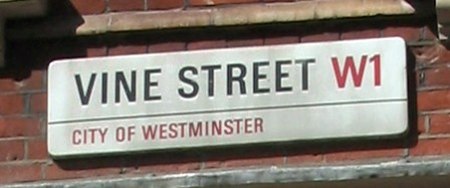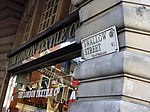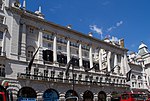Vine Street, London

Vine Street is a street in Westminster, London, running from Swallow Street, parallel to Regent Street and Piccadilly. It is now a dead end that was shortened from a longer road in the early 18th century owing to the building of Regent Street. From the 18th to 20th century, it was home to Vine Street Police Station, which grew from a watch-house into one of the busiest police stations in the world. The Marquess of Queensberry was charged with libel against Oscar Wilde here in 1895. There was also a court house in the 18th and early 19th century. The street's association with law has led to it being grouped with Bow Street and Marlborough Street on the standard British Monopoly board.
Excerpt from the Wikipedia article Vine Street, London (License: CC BY-SA 3.0, Authors, Images).Vine Street, London
Vine Street, City of Westminster Mayfair
Geographical coordinates (GPS) Address Nearby Places Show on map
Geographical coordinates (GPS)
| Latitude | Longitude |
|---|---|
| N 51.50941 ° | E -0.13729 ° |
Address
Vine Street
Vine Street
W1J 0AH City of Westminster, Mayfair
England, United Kingdom
Open on Google Maps







